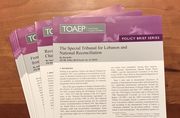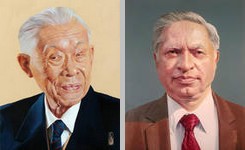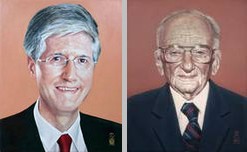Table of contents:
Element:
3.1. The conduct took place in the context of a manifest pattern of similar conduct.
A. Evidentiary comment:
An introduction to the Genocide section of the Elements of Crimes provides some clarification of the meaning of this element. It specifies, inter alia, that:
The first of these clarifications was to ensure that the initial perpetrator in a pattern of conduct would not escape liability on the basis that the pattern had not yet been established at the time of his or her conduct (see Lee, The International Criminal Court: Elements of Crimes and Rules of Procedure and Evidence, p.47)
Cassese points out that this wording leaves it unclear whether the "similar conduct" required must be constituted by the same genocidal acts as that charged (eg, for a charge of genocide by killing, will only a manifest pattern of killings suffice) According to Lee, this question was discussed during drafting and it was considered sufficiently clear that the term "similar" would refer to any of the five types of genocidal act listed in article 6 (see Lee, The International Criminal Court: Elements of Crimes and Rules of Procedure and Evidence, p.47).
Lee also explains that the drafters did not have in mind a requirement that the "similar conduct" be shown to have been carried out with genocidal intent (see Lee, The International Criminal Court: Elements of Crimes and Rules of Procedure and Evidence, pp.47 48).
A. Legal source/authority and evidence:
Prosecutor v. Zdravko Tolimir, Judgement (TC), 12 December 2012, para 770:
770. The Majority recalls that at least 5,749 Bosnian Muslim men from Srebrenica were killed by Bosnian Serb Forces in a period of only several days. These killings followed a pattern. Bosnian Serb Forces were deployed to specifically selected remote locations to take part in these killings. The vast majority of the killings occurred in an efficient and orderly manner; following some of the largest mass executions in Bratunac and Zvornik between 13 and 16 July 1995, machinery and manpower were swiftly put in place to remove, transport and bury thousands of bodies. These bodies were later dug up and reburied in a further effort to conceal what had occurred. There is no doubt in the Majoritys mind, Judge Nyambe dissenting, and indeed the evidence has demonstrated, that several layers of leadership were involved in the organization and coordination of the killing operation.
3.2. The conduct was conduct that could itself effect such destruction.
A. Evidentiary comment:
Lee suggests that this element might cover a situation such as the use of a weapon of mass destruction, where one act alone might suffice to destroy a protected group in whole or in part (see Lee, The International Criminal Court: Elements of Crimes and Rules of Procedure and Evidence, p.46, n. 28).







